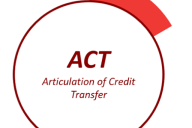You have /5 articles left.
Sign up for a free account or log in.
Developmental education reform has made significant strides in the past two decades, however, if the goal is equity, completion and lasting change in gateway courses, the work to reform developmental education isn’t done—not even close. Nationally, states have passed laws and higher education systems have issued mandates requiring the use of specific high-impact practices and restricting the offering of standalone remedial courses.
Institutions have redesigned placement systems to incorporate multiple measures and, with growing popularity, have begun using self-directed placement. Corequisite models, where students receive concurrent support for a gateway math or English course, have received increased attention and expansion. Using just-in-time content support and devoting time to student success techniques, corequisite courses have proven to support students’ retention rates.
While we know which practices are impactful, it is still common for them to be used alongside traditional approaches, such as stand-alone developmental courses and high-stakes placement tests. That is, these practices are not the default means of how students interact with gateway courses; they are an option. There are many reasons for this lack of scale, with skepticism from faculty being a common refrain from those in academic leadership.
Recent research reinforces what many of us in the trenches already know: Corequisite support is a powerful tool, but it is not the only solution to gateway course reform; it was never going to be. Without scaled and nuanced implementations, corequisite models are not enough on their own. Too often, states and institutions have pursued top-down solutions without sufficient attention to the people who impact scaled implementation the most: faculty.
In fact, reformers and leaders in higher education spaces may have overlooked the hardest and arguably most important part: the classroom. If gateway course reform is the goal, we have to shift from a mainly structural reform emphasis (e.g., pathways, corequisites and placement) to incorporating classroom reforms that impact curriculum, instruction and assessment. These changes are some of the most difficult ones to make but are also the ones that have shown to matter the most. Structural reform is essential, but so is reform in the space where learning occurs.
Why Early Reforms Didn’t Get Higher Education to a New Normal of Scale
Early corequisite reform efforts found initial momentum by engaging supportive policymakers and system leaders and by using clear levers for change such as legislation or funding changes. However, even where reforms have been adopted, outcomes have been mixed. Completion rates have increased in some states but remain below expectations set in goal initiatives, such as Illinois’s 60 by 25 and Tennessee’s Drive to 55. Despite a broad commitment to increasing equity in higher education, equity gaps by race, income and age persist. In states with strong shared governance structures or influential faculty unions, the pace of reform has been slower and more complex.
The common thread I’ve come to realize is this: Significant faculty cooperation and intentional faculty involvement are key to successful reforms at scale. I’ve seen this firsthand during my career in Illinois as a tenured math professor for many years who was also a union member and went on strike in 2015. Faculty have an incredible impact on students’ learning experience and outcomes; as such, faculty should be involved in the decision making that impacts them directly. However, in faculty-driven systems, the reality is that change is harder and takes longer. That doesn’t mean it’s impossible.
My company, Almy Education, has worked with dozens of institutions across governance models and states. We have learned that scaled reform comes from meaningfully working with faculty. While that work may be more challenging than going around faculty, it will allow an institution to get the roots of what can hold back a scaled implementation. We’ve found when we intentionally integrate faculty as part of the institutional conversation, we can achieve the following:
- Decide what courses and materials to remove or shift away from, not only add new ones.
- Choose how many courses and sections of stand-alone developmental courses will be retained, even if that may mean someone’s position at the institution changes.
- Determine how the class schedule needs to evolve to better support student needs and outcomes.
- Adjust student intake practices to the institution that have the greatest impact on outcomes, even if it means a shift in human and financial resources.
- Prioritize use and maintenance of data tools so that ongoing decision making is well informed.
- Set the expectation that academic and student affairs will continually work together to improve gateway course success, not in silos or temporarily during an initiative.
To reach scale, administrators, staff and faculty have to work together in an ongoing fashion as well as compromise for the greater good of student outcomes. We all have to own our roles in contributing to the aforementioned bulleted barriers when it comes to higher education reform. While usually unintended, they are barriers nonetheless. Reducing and removing these barriers to change often requires having hard conversations. The conversations are not always comfortable, but the results for students are worth it.
More students complete gateway math and English courses and establish course momentum when developmental education reform is implemented at scale and improved upon over time. Scaled reform allows for more students to complete two-year degrees and certificates and/or transfer to complete a four-year degree. Increased student completion results in well-prepared adults in the workforce, the outcome nearly everyone in higher education is working toward.
How to Effectively Integrate Faculty Into Your Reform Initiatives to Achieve Success at Scale
So how do administrators, staff and faculty work together on scaling gateway course reform, especially when resistance occurs? Many faculty are not resistant to reform; they are resistant to being handed a one-size-fits-all solution from someone who doesn’t understand their students, classrooms or institutional realities. Research has shown that there isn’t one particular way to implement reforms like corequisites that work the best; finding the best solution is a process that must include faculty in deliberate ways.
Faculty are also exhausted. The post-pandemic classroom is more demanding than ever, with student engagement seeming to be at an all-time low. Asking faculty to make massive changes without the support to do so can bring a reaction of resistance. Similarly, student affairs staff are also stretched thin with insufficient staffing and higher demands from students. They, too, need resources to make adjustments at scale that impact gateway course outcomes.
To minimize resistance and thoughtfully add support where it can have the most impact, there are tangible ways to assist faculty and staff with scaling implementation of gateway course reform at the institutional and classroom levels. In our work across two-year and four-year institutions, we’ve observed what works:
- Custom strategies tailored to each institution’s context, culture and capacity based on best practice and its own data.
- Embedded professional learning that supports both pedagogy and content that’s ongoing, not one-and-done.
- Support for using backward design strategies with gateway curriculum and instruction from the perspective of student needs, career pathways and transfer goals.
- Staffing and funding so that corequisites are paired with intentional support, providing not just more time, but better use of time.
- Deliberate use of corequisites where they make sense, alongside better-designed stand-alone options for a small number of students who may need them.
- Pathways that provide clarity to connect math courses to students’ actual goals and are implemented purposefully, not as an option.
- Focus on throughput, not just pass rates, and disaggregated outcomes that can support equity work.
This next phase of gateway course reform requires the higher education industry to go deeper. We will have to face the structural barriers and the pedagogical ones. We must be willing to say the quiet parts out loud and have difficult conversations. We must be brave enough to make decisions and ultimately changes that work for the good of the students. Those changes should have broad support, but they may not make each individual at an institution content 100 percent of the time. Doing this work is not simple or easy. But it is necessary if we want real reform at scale that lasts.


